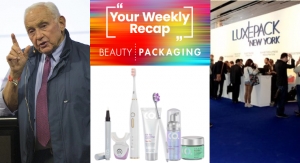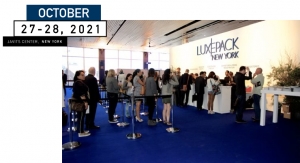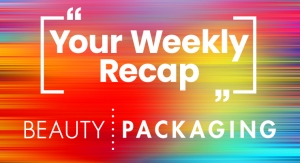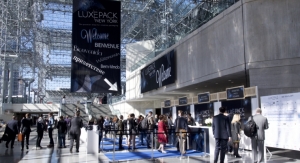Jamie Matusow, Editor04.29.15
Jamie Matusow: Can you please summarize what you will be speaking about at Luxe Pack New York regarding sustainable packaging for the beauty/personal care industry?
William McDonough: I have been working with global manufacturers and retailers to design new packaging concepts and systems because packaging represents a tremendous opportunity for innovation. It is time to reimagine how we package everything—by charting a path to enduring value.
I feel very privileged to be invited to speak at Luxe Pack New York because I have been asked to discuss “sustainable packaging for the beauty care industry.” There exists a tremendous opportunity for leadership both within the packaging and products industries. In the end, of course, it is all one thing and it is currently not at all ‘sustainable,’ as most everyone has come to realize.
Coming at this from the luxury end of the spectrum of packaging is a delightful prospect because packaging for luxury products is meant to be delightful. But it is also meant to convey and connect messages of quality about the contents of the package.
I suggest that we move away from a world of limits, where so often the question being asked is, ‘How much can we get for how little we give?’ As we shift away from limits and that cold question, we can consider the delightful luxury of being able to offer a gift to someone that is beautiful, gracious and true.
And what if not just the contents encircled that hope and love, but the package itself was self-similar? And what if they told a wholly different story, about a world of abundance and generosity, where the question being asked is now, ‘How much can we give for all that we get?’ Our beautiful, true, and graceful offering then communicates things that matter in a world of matter.
JM: What is currently driving a move toward environmentally responsible packaging?
WM: I think that we all want a beautiful package for a beautiful product. Manufacturers want to manifest their care for the beautiful Earth. These are not mutually exclusive aims. Packaging can be beautiful—endlessly. The search for truth and beauty are one and the same. At Luxe Pack, I will be exploring these possibilities … how human ingenuity can transform how we think about packaging.
Much of my thinking about these issues emanates from my having been born in Japan and spending part of my childhood there. In Japan, gift giving is highly ritualized and is a defining element of the human relationship. As children, even our candy came wrapped in soluble rice paper. Our beautiful, child-like litter left no trace after the first rain. Eggs were braided in straw, pencils and brushes were delivered in beautiful lacquered boxes, and the silk ribbons and paper were exquisite confections to the eye and the finger, a visual and tactile prelude to the wonderment of the little treasure that might be inside. I remember collecting the ribbons, the boxes, and the tissue paper. They were so beautiful, we used them over and over again in inventive ways, and they never lost their magic.
JM: Is there a lack of appropriate materials available?
WM: I am a designer. I am getting very involved in designing packaging, from the prosaic—cereal boxes—to the most delightful personal care and beauty products packaging. And what, you may ask, would I use? As I go about designing a luxury package today, what materials would I consider to make a gift that doesn’t come from a destructive taking to be a short term throwaway moment in the world and then goes on to destroy the quality of the ocean or the soil or the atmosphere? How could such a thing represent a gift? Indeed, it would be taking from future generations—an expression of intergenerational tyranny. Fortunately, there are better choices. We are designing new papers that we can make from leftover agricultural materials, such as straws and celluloses known as agricultural secondaries. These can be very beautiful, and they can go safely back to the soil—they are what I have long called ‘biological nutrients.’ We can also design plastics that are so luminous that I call them ‘solid light’ and also metals that can be utilized over generations as ‘technical nutrients’ in endless upcycles of reuse.
JM: Would you want to point to any successful examples in the beauty/personal care industry?
WM: The most progress is being made by companies that have focused on the quality of their products, and then realize that they are selling the product and also the package, itself. Curious and wonderful examples have included people using plastics from the ocean as a poetic evocation. We can find ways to use recycled high-density polyethylene, for example.
JM: What should designers of luxury beauty/personal care packaging keep in mind?
WM: Today, our palette is typically industrial or agricultural materials, but they have this tremendous quality of endless elevation of the human spirit and continuous, multi-generational enjoyment—which might actually be an ideal, elegant way to describe the quality of luxury itself.
There is another way to look at this: We all want to celebrate value in our lives. When we design with our values, we create value. I call this working ‘From Values to Value.’ This is an immensely satisfying process for individuals, teams, and entire companies, in my experience, and one that we are seeing manifest more and more.






















